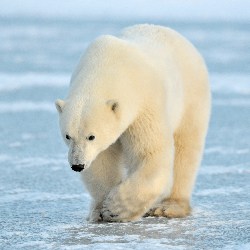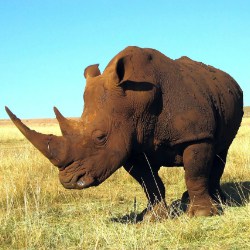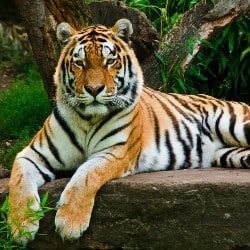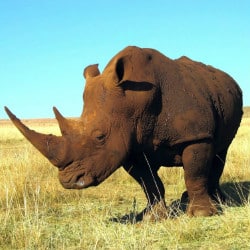News
We bring you the latest from around the World in wildlife and conservation news.
Story of The Starving Polar Bear
Last year, during the summer, a male polar bear that was completely emaciated was seen wandering across a large sheet of ice in the Svalbard Archipelago. Based on its size it appeared as if the bear had not eaten for many months. The polar bear was so lean that researchers placed it in the thinnest category to describe its level of fat stores. Human induced climate change has caused the sea ice to melt, making it harder and harder for bears to find prey.
Zebra Stripes Do Not Help When It Comes To Evading Predators
Despite what most people think, zebra stripes do not help them evade predators. According to a new study their distinctive pattern may even make them easier to catch instead of making it harder. The research debunks the theory that zebra stripes offer what is known as motion dazzle which is thought to have evolved in animals like zebras and was even used to camouflage ships during the two World Wars.
Northern White Rhino On The Brink Of Extinction
There are only three females and one male Northern white rhinos left in the world and none have the ability to naturally reproduce. This has means that the species is quite literally on the brink of extinction and the only hope for the species to perpetuate itself is through in vitro fertilization. Unfortunately this procedure has never been carried out successfully in the past, leaving scientists very worried.
Global Warming Causing Walruses En Masse To Migrate To Alaskan Beaches
Walruses are being adversely affected by global warming which is causing sea ice that they use to melt and in the process forces them to congregate on a remote island in Alaska near Point Lay. A decade ago people who lived in Point Lay said at most only a handful of walruses used to come ashore every year, however now walruses are arriving en masse every summer.
Just 106 Wild Tigers Left In Bangladesh
There are as little as 100 Royal Bengal tigers now living in Bangladesh’s Sunderbans forest which is much less that what was previously through according to the latest data. Based on a survey that made use of hidden cameras, forestry officials counted 106 wild tigers on the Bangladeshi side of the largest mangrove swamp in the world. It is estimated that on the Indian side there are about 74 tigers left.
New Device Could Change The Way Conservationists Respond To Poachers
Elephants, tigers and rhinos could all be saved from the threat of poaching by a collar which monitors their heart rates combined with a video camera and a global-tracking device. According to Paul O’Donoghue, chief scientific adviser for British conservation company Protect, the instant a poaching event occurs, the heart rate monitor will trigger an alarm that pinpoints the animal’s location within a few metres. This essentially means park rangers can be at the scene of the event within minutes by helicopter leaving not enough time for poachers to harvest the animal parts or make an escape.
Global Warming Is Leaving Polar Bears Starving
Polar bears have not been able to adapt to warmer summers in the Arctic which has meant that less food is available. Previously scientists thought that the bears would enter into a type of walking hibernation when deprived of food, however the latest research suggests that when food is scarce in hotter conditions, polar bears simply starve.
Internet Expresses Outrage At The Death Of Cecil The Lion
Last month an extremely popular lion in Zimbabwe known as Cecil, was killed just outside Hwange National Park sparking outrage across the internet. Authorities have identified the hunter as a dentist from Minnesota who paid US$55,000 for the privilege of killing Cecil. Apparently tour guides were said to have lured Cecil beyond the park boundaries at which point the hunter shot Cecil with a crossbow.







